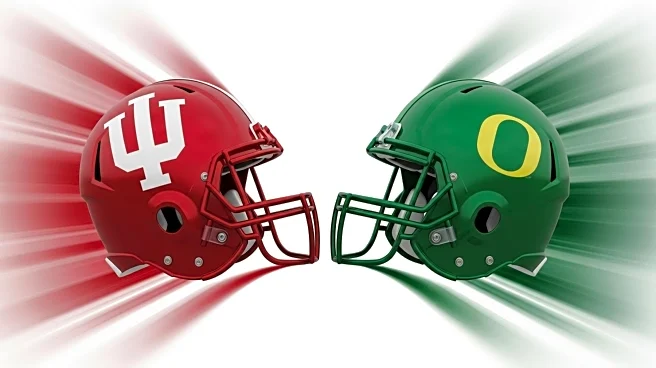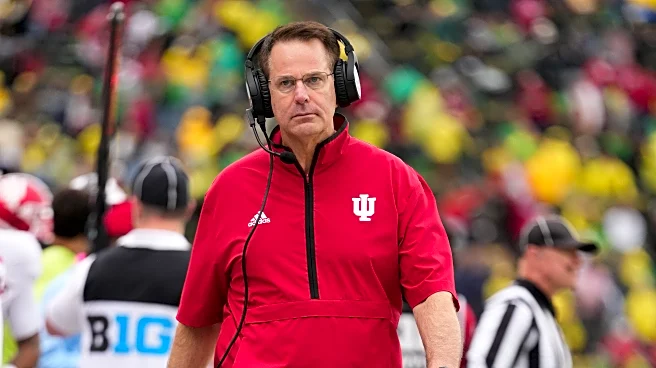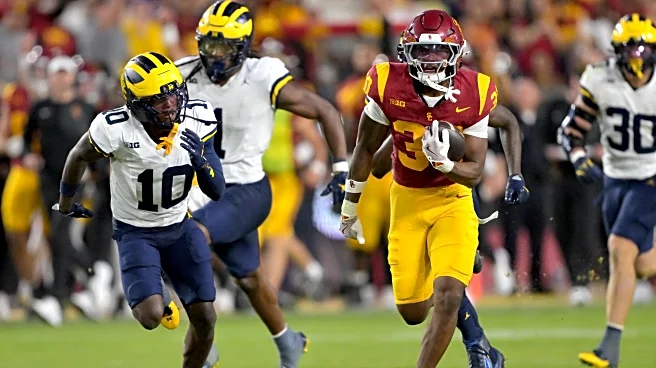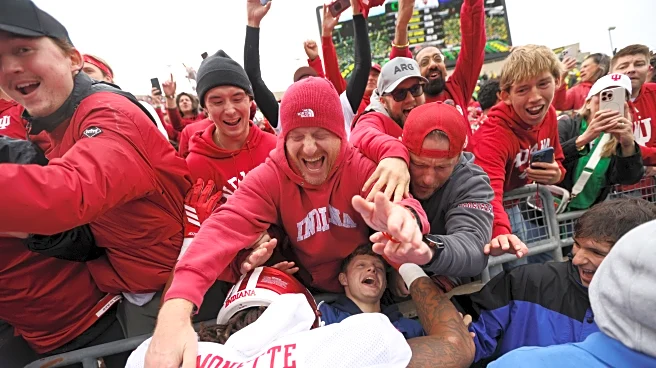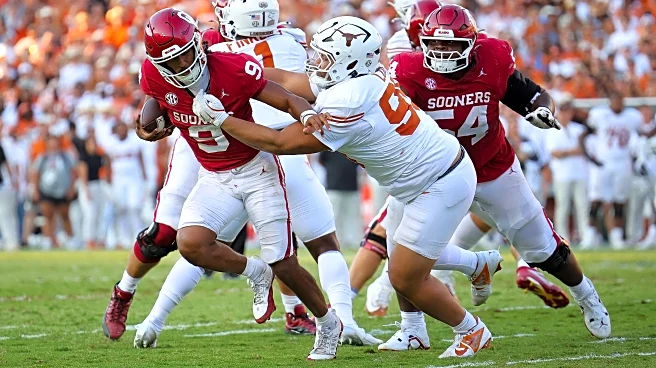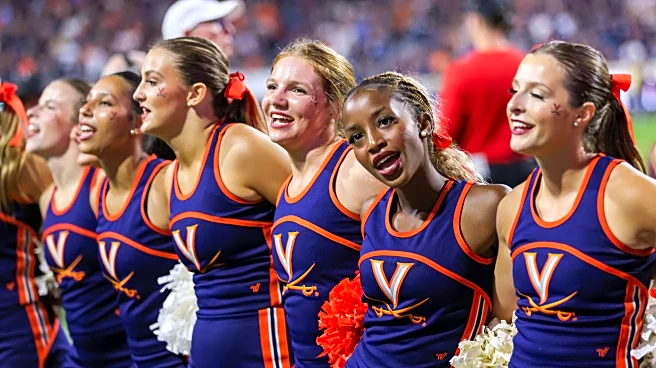What's Happening?
Indiana has emerged as a formidable contender in the Big Ten football landscape following its impressive 30-20 victory over Oregon. This win marks Oregon's first regular season Big Ten loss and ties Indiana's highest AP-ranked win of all time, matching their victory over No. 3 Purdue in 1967. Ohio State continues to dominate the conference, maintaining its top position with a decisive 34-16 win over Illinois. The Buckeyes are projected as the No. 1 seed in the College Football Playoff, solidifying their status as the Big Ten champion. Meanwhile, Alabama narrowly defeated Missouri in the SEC, and Texas upset Oklahoma in the Red River Rivalry.
Why It's Important?
Indiana's victory over Oregon has significant implications for the Big Ten conference, potentially altering playoff projections and rankings. This win boosts Indiana's position in the playoff bracket, showcasing their potential to challenge traditional powerhouses like Ohio State. The shift in dynamics could lead to increased competitiveness within the conference, impacting team strategies and recruitment efforts. For Ohio State, maintaining their dominance reinforces their reputation and strengthens their playoff prospects. The broader impact on college football includes potential changes in rankings and playoff seedings, affecting team morale and fan engagement.
What's Next?
As the season progresses, Indiana will aim to capitalize on their momentum and continue their winning streak. Their performance against Oregon sets a precedent for future matchups, potentially influencing their approach to upcoming games. Ohio State will focus on maintaining their top position and securing their playoff spot, while other teams in the conference may adjust strategies to counter Indiana's rising threat. The outcome of these games will be closely watched by fans and analysts, as they could reshape the playoff landscape and influence national rankings.
Beyond the Headlines
Indiana's unexpected rise in the Big Ten highlights the evolving nature of college football, where traditional powerhouses face challenges from emerging teams. This shift could lead to increased investment in team development and recruitment, as schools seek to enhance their competitiveness. The cultural impact includes heightened fan engagement and regional pride, as Indiana's success resonates with supporters. Additionally, the changing dynamics may prompt discussions on the future of college football, including potential reforms in playoff structures and conference alignments.
